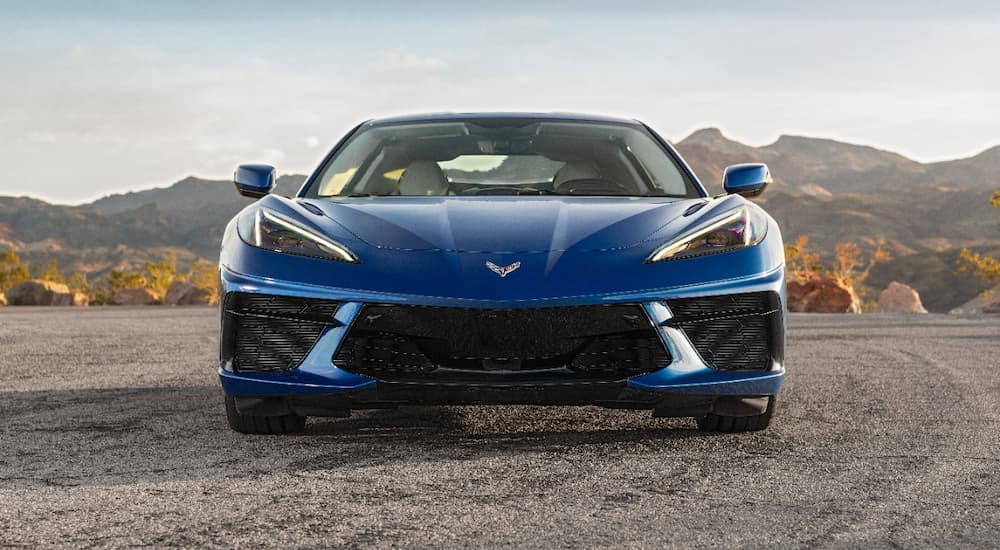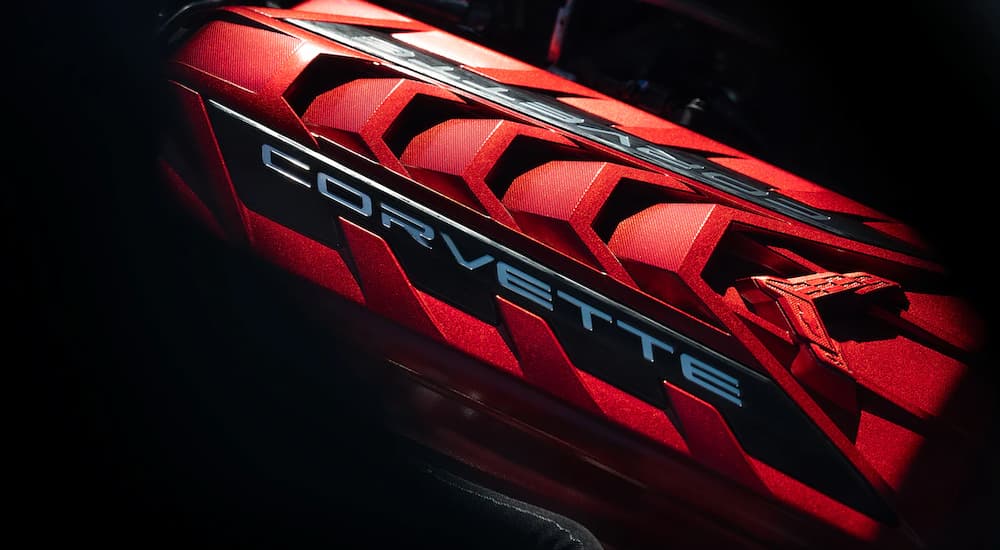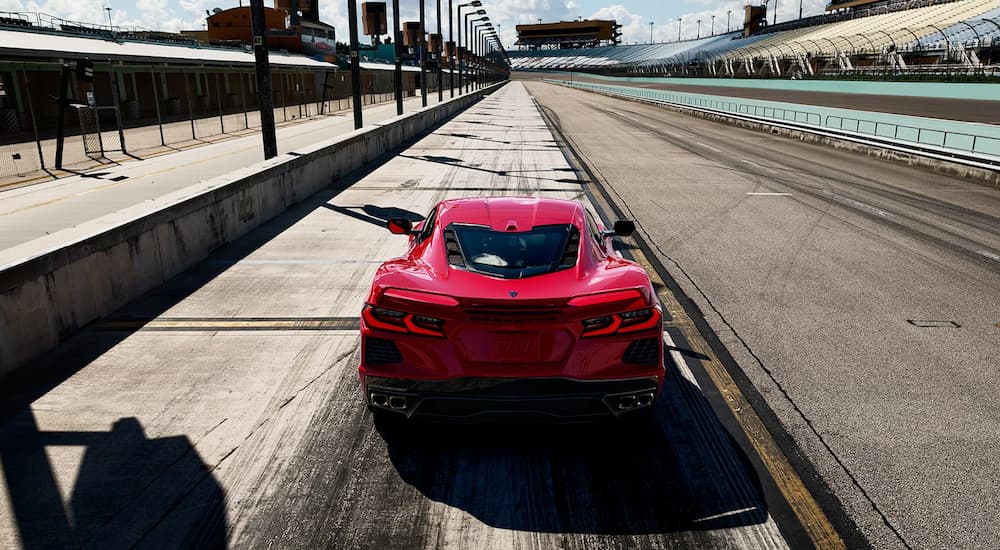There are some cars that simply exist on a higher level than most other cars. Granted, there are so many interesting cars on the market, many of which cannot be compared with one another; after all, how is one to compare a pickup with a compact EV, when they have completely different purposes, markets, and buyer demographics? But, even so, there are some cars that are simply a feat of engineering, a feat of design, or a feat of technology. Sometimes, even, there are cars which are a feat of all three of these things. One of those vehicles is, of course, the 2022 Chevy Corvette.
The Corvette has always been one of the sharpest and most riveting sports cars in the automotive world, and as engineering and technology develop, it only becomes sharper and more riveting. Within the past couple of years, the Corvette has taken on a new engine placement and, in doing so, has reverted to an older construction design. This design, however, proves that our predecessors were onto something, as it serves to make the 2022 Chevy Corvette Stingray the best Stingray ever produced. These capabilities, in turn, make the Corvette ever-more apt for its truest purpose, which is racing. So, let’s take a look at what the Corvette has been up to over the past couple of years and how it is serving to make the 2022 model the best in history.
Mid-Engine Placement
The Corvette has brought back an old automotive design concept: the Mid-Engine placement design. What is the mid-engine design? Well, I’m glad you asked. There are three possible engine placements for vehicles: front-engine, mid-engine, and rear-engine. A front-engine design places the engine in over the front axle, whereas a rear-engine design places the engine over the rear axle. Simple enough. So, as you may have guessed, when a car has a mid-engine design, the engine is positioned between the front axle and the rear axle. So, in a mid-engine car, the driver and the passenger(s) are actually seated in front of the engine.
Most of the vehicles we see on the road today utilize the front-engine design. While it may seem from the advertisements that the mid-engine design is a brand new feat of automotive technology, this design has actually been employed since very early in automotive history. The 1903 Ford Model A, for example, was a mid-engine car. This was a different type of mid-engine vehicle, though, in that the driver and passengers sat above the engine. The mid-engine design began to transform into what we know it to be today, with the 1961 Bonnet Djet, the first modern production mid-engine car. So, this is by no means a brand-new technology. But, sometimes, the future lies in the past.
Chevrolet introduced its first mid-engine sports car with the 2020 Corvette. This, of course, continues into the new 2022 model, and it emphasizes the effectiveness and brilliance of the mid-engine design by making the engine visible. Yes, on the Corvette Coupe, the engine is well-displayed in a very aesthetically-pleasing fashion through the rear hatch window. The Corvette has always been one of the most stylish sports cars on the road by way of its sharp, winged features, lean yet sturdy stance, and sleek color options. While maintaining all of that, it now takes its looks to a new level by displaying the very heart of the vehicle for all to see.
You may be thinking, “alright, well, that’s real neat that the new Corvette has a mid-engine layout, but does it work?” That’s a fair question. What does the mid-engine design actually do, and how does it pay off? Let’s talk about that next.
Balanced Handling
I would like to begin this section by pointing out that the mid-engine 2022 Corvette can reach up to 495 horsepower and 470 pound-feet of torque. Yes, 495 horsepower, you read that correctly. These are big numbers, and they do indeed make the 2022 Corvette Stingray the most powerful Stingray ever produced. So, I hope that this automatically clears up any concerns as to whether or not the mid-engine design is effective. But, aside from providing the vehicle with impressive numbers like this, one of the biggest things that the mid-engine provides is balanced handling.
Because the engine is placed evenly between the front and rear axles, the design makes for a better, more even distribution of weight between the front and rear tires. This, in turn, makes the car better able to respond to the driver’s steering in a sharp and consistent manner. Fixed, now, is the problem that both front-engine and rear-engine cars possess. Front-engine cars have more weight over the front wheels, causing them to understeer (not respond sensitively enough), whereas rear-engine cars have more weight over the rear wheels, causing them to oversteer (respond too sensitively). The mid-engine design, therefore, allows for even and balanced traction between the two axles making for ideal responses to driver input.
“Well, this sounds great! But why did so many cars decide to go with a front-engine design instead?” I hear you ask. Think about it, though: when the engine is at the passenger level, such as in the 2022 Corvette, you now have an engine taking up the space where passengers and/or cargo could be placed. Placing the engine in front allows for more passenger seating and more spacious cargo storage. That being said, the Corvette was never meant to be a load-em-up road-tripper for passengers and cargo; it is made to zip around and utilize its stellar aerodynamics. It is most certainly a car that is meant to stay clean, so my guess is that the limited passenger and cargo space will continue to be a non-issue for most Corvette buyers. What the Corvette lacks in cargo and passenger space it makes up for in racing capabilities.
A Racing Thoroughbred
The Corvette truly is a car designed for racing. As Laura Klauser, General Motors Sports Car Program manager, would put it, “racing has been part of the Corvette’s DNA from nearly the beginning.” In 2020, Chevy took the Corvette to the tracks yet again and saw tremendous success. From Chevy HQ:
“Corvette Racing Shined during IMSA’s 2020 sports car championship series, capturing six victories and seven pole positions, and setting the fastest class race laps in six events. During the 2020 series, Chevrolet won the GT Manufacturers title – its 13th since 2001.”
With mid-engine placement, the Corvette is better able to zip around the track and maneuver quickly by having stellar response time. This is clearly seen in the accolades that the vehicle continues to earn on the racetrack.
There is, perhaps, one other downside to the mid-engine placement, which appears most particularly in a racing environment – the safety component. If one experiences a head-on collision with mid-engine placement, then there is less machinery to absorb the collision and more direct impact and danger for the driver. So, while enjoying the sharp responsiveness of the mid-engine placement, it is always important to be mindful of safety. But that doesn’t mean you shouldn’t enjoy it nonetheless, and Chevy has engineered a front crumple zone to protect the passenger cabin in the advent of an accident.
Form is Function
The Corvette is designed to be a step up from all other vehicles. We all know that it looks cool, but cool looks do not always translate into excellent engineering, functionality, and performance. But, in classic Chevrolet fashion, the 2022 Corvette is carefully and deliberately crafted to be a leader in automotive engineering. Some vehicles are designed specifically for functionality, while others are designed specifically for fun. In the 2022 Corvette, these things crossover because its mid-engine placement sharpens all of the vehicle’s already-excellent features, making it sharper and more responsive than ever.






